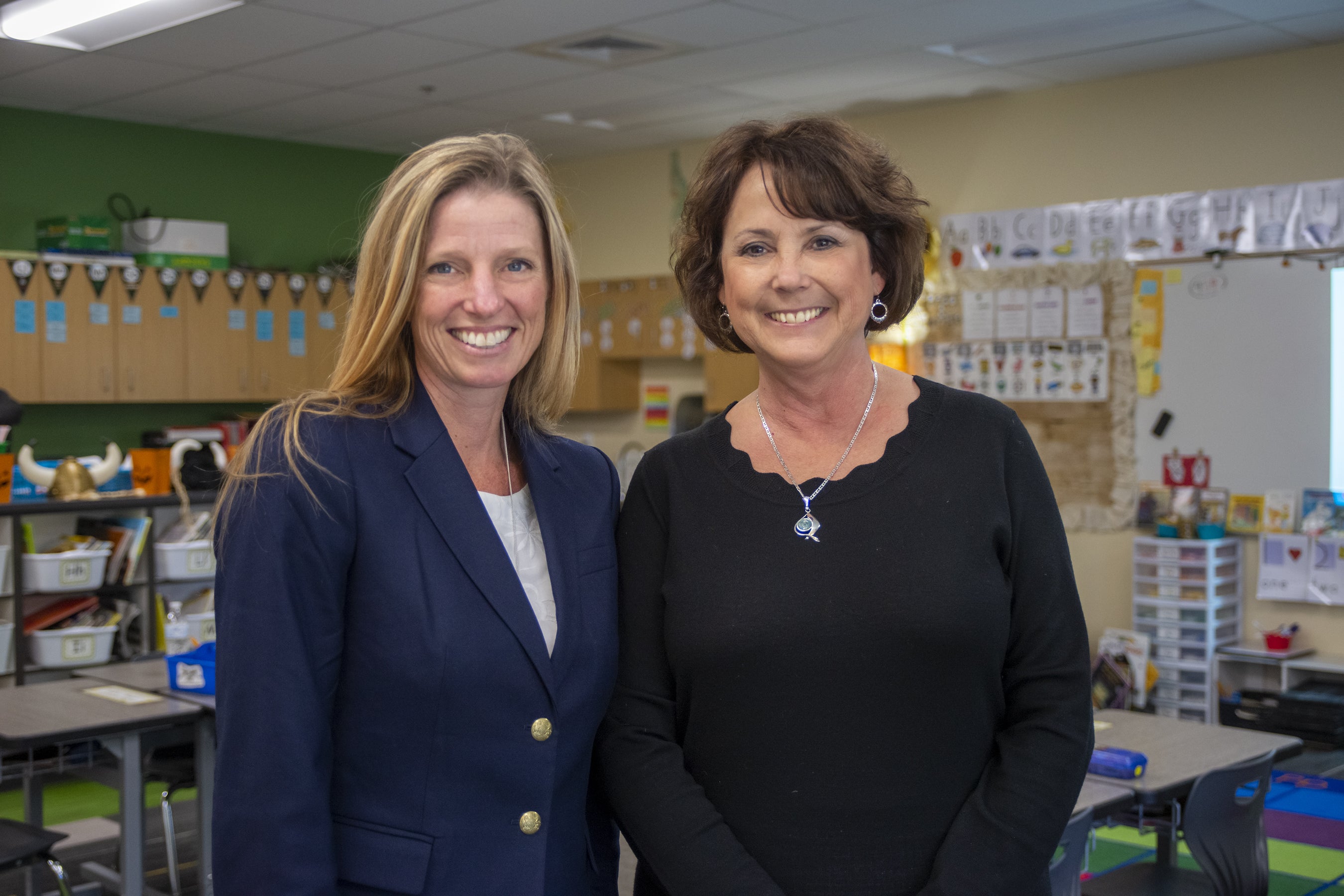
As new teachers in every grade begin their professional careers, they have their work cut out for them – from building lesson plans and getting to know individual learners, to meeting their grade levels’ rigorous standards for learning. Similarly, schools and districts spend precious time and resources on-boarding new teachers to be successful in their local communities.
In 2016, the Learning Policy Institute, a national nonpartisan education policy research center, issued a report citing high teacher attrition as the driving factor in teacher shortages. This report identified a nearly 8 percent teacher attrition rate in the United States in the last decade (rising from about 5 percent in 1989) and cited even higher attrition for new teachers, and teachers in high-poverty schools and districts.
According to Jennifer Snow, interim dean for Boise State University’s College of Education, most newly certified teachers from Idaho’s teacher preparation programs graduate “well-started” for their first day in the classroom. However, without the right support in their new classrooms, one in five Idaho teachers (or 20 percent) will leave the profession after their first year, according to the Regional Educational Laboratory (REL) Northwest. Recruiting and onboarding new teachers can be costly and resource-intensive for districts, and staff turnover can negatively impact student learning.
“We can see through the research that the teacher shortage problem is a teacher retention problem,” said Boise State clinical associate professor Sherry Dismuke, who has personally witnessed the pressures new teachers face trying to juggle all of the responsibilities that come with teaching.
In 2014, Boise State’s College of Education began focusing efforts on supporting retention programs in the early years of teaching for its graduates. Snow and Dismuke started looking at ways to study the effectiveness of teacher education programs and their graduates’ impact on pre-kindergarten through grade 12 student learning. During their research, they observed the issue of teacher turnover first-hand in the Treasure Valley.
Snow and Dismuke found that in addition to universities graduating well-started teachers from their programs, continued support from university faculty could bolster new teachers’ effectiveness in the classroom and help them stay. In 2017, the duo began implementing structured support for new teachers statewide as part of a study they designed to assess teacher retention strategies, along with a team of co-researchers from other Idaho universities and a State Agency Higher Education (SAHE) Partnership Grant.
Rich Smith (BA, Elementary Education, ‘14) participated in the initial study and currently teaches sixth grade at Whittier Elementary in Boise. Early in his teaching, Smith noticed a standard curriculum was not working for his students. Because he was participating in the study, Boise State faculty were able to help him feel confident in adjusting the materials for his students’ unique learning needs.
“The professors in the study assured me that if I always had the best interest of my class at the core of my decisions, no one was going to be upset with me,” said Smith. “They made sure I understood that every decision I made needed to be intentional and with the purpose of best serving the students I had.”

Several other graduates from Boise State’s teacher education program have participated in the study. In exchange, they received individualized teaching support and a stipend. Participating teachers also attend six practice-based workshops taught by College of Education faculty designed to create an instructional unit for their class that includes lesson planning, assessment, analysis and self-reflection on their instruction. The process, which also includes planning out student-engagement and teaching strategies for diverse learners, can take anywhere from 2 to 16 weeks.
During the study, an observation team consisting of certified liaisons from the College of Education, along with Dismuke and Snow, visit participating teachers in their classrooms to observe and individually mentor the teacher through their unit. Afterward, liaisons and teachers analyze data collected during the unit, along with classroom observations, to assess student learning outcomes. This process is designed to help new teachers identify areas where they can improve planning and teaching. This data-driven, student-focused approach gives new teachers crucial information to better teach their classes.
“Student data is the most powerful tool for changing practice,” said Dismuke.
Completers of the study have gone on to become successful educators and advance in their careers. Since 2014, 36 of the 42 new teacher participants involved in the study have remained teaching in Idaho. The other six are either teaching out of state or are currently taking a break from teaching, not necessarily leaving the profession. The study provides an effective support system for new teachers in the classroom as well as contributing to a higher teacher retention rate than the state average. Additionally, because one in five Idaho teachers will leave the profession after their first year without the right support, the efficacy of this study provides a real solution for keeping new teachers in classrooms.
Five years after Smith’s participation in the study, Smith’s principal at Whittier Elementary School, Fernanda Brendefur, describes a confident teacher who inspires his students every day.
“Rich’s greatest strength is building caring relationships with his students. This commitment to each student allows him to get to know their unique strengths and challenges, which informs how he adapts his curriculum and classroom management,” said Brendefur. “Working with Rich has been a true joy and I have learned so much about teaching and learning (from him).”
Kaleigh Fox (BA Elementary Education,‘15) was excited to work with Boise State faculty again so early in her teaching career. Fox currently teaches sixth grade at Fremont Middle School in Kuna, and was recognized as Fremont Middle School’s Teacher of the Year in 2018. Fox says a crucial component to her success was participating in the study.
“I was still very inexperienced with standards, the students and teaching in general,” said Fox. “The study gave me a safe environment and support system to practice skills in order to be the best teacher that I could be for my students. It required me to think critically about standards, assessments, and how to create effective cross-curricular units that were engaging.”

Snow has witnessed the growth new teachers experience with the hands-on support and step-by-step approach the study has provided.
“It has been exciting to build communities of practice with new teachers where they can find support in their growth across a professional lifespan,” said Snow. “We focused on learning alongside students, using evidence and data to inform instructional practice, and individual professional goal-setting to sustain teachers along the way. It was reassuring, for us and for them, to see that we could focus on smaller goals to see success and maintain our excitement for teaching throughout a career.”
Annual reporting conducted by the College of Education indicates 76 to 85 percent of teacher education graduates from the past three years who accept teaching positions in Idaho, stay in the Treasure Valley. Though most Boise State teacher education graduates stay in the Boise metro area, Snow and Dismuke recognize the importance of expanding their research, and are currently focused on implementing the study in rural areas.
“Institutions of higher education need to work alongside our pre-kindergarten through grade 12 partners so that all teachers and all students have every opportunity to learn and achieve success,” said Snow.
– By Carrie Quinney